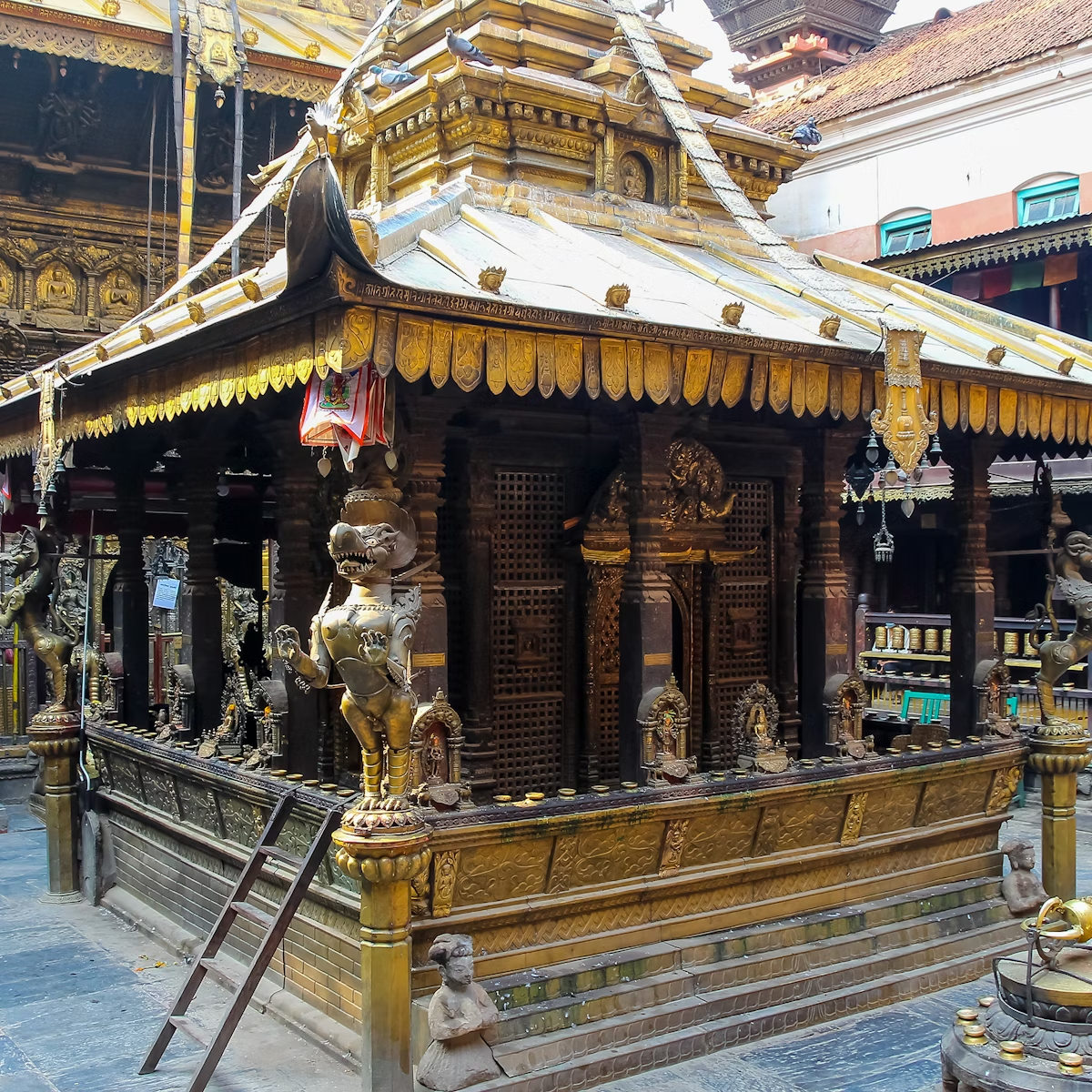The blood-soaked temple of Dakshinkali, a favourite Hindu pilgrimage destination, is set at the confluence of two sacred streams in a rocky cleft in the forest. The temple is dedicated to the goddess Kali, the most bloodthirsty incarnation of Parvati. To satisfy the blood-lust of the goddess, pilgrims drag a menagerie of animals down the path to the temple to be beheaded and transformed into cuts of meat by the temple priests, who are also skilled butchers.
Once the sacrifice is made, the meat goes in the pot – pilgrims bring all the ingredients for a forest barbecue and spend the rest of the day feasting in the shade of the trees. Saturday is the big sacrificial day, and the blood also flows freely on Tuesday. For the rest of the week Dakshinkali is very quiet. During the annual celebrations of Dasain in October the temple is washed by a crimson tide and the image of Kali is bathed in the gore.
The approach to the temple from the bus stand winds through a religious bazaar, which is often hazy with smoke from barbecue fires. Local farmers sell their produce here to go into the post-sacrifice feasts, along with piles of marigolds, coconuts and other offerings for the goddess. Only Hindus can enter the temple courtyard where the image of Kali resides, but visitors can watch from the surrounding terraces. However, remember that the sacrifices are a religious event, with profound spiritual significance for local people, and not just an excuse to snap gruesome photos.
A pathway leads off from behind the main temple uphill to the small Mata Temple on the hilltop, which offers good views over the forest. Several snack stalls at the Dakshinkali bus park serve reviving tea and pappadams.







